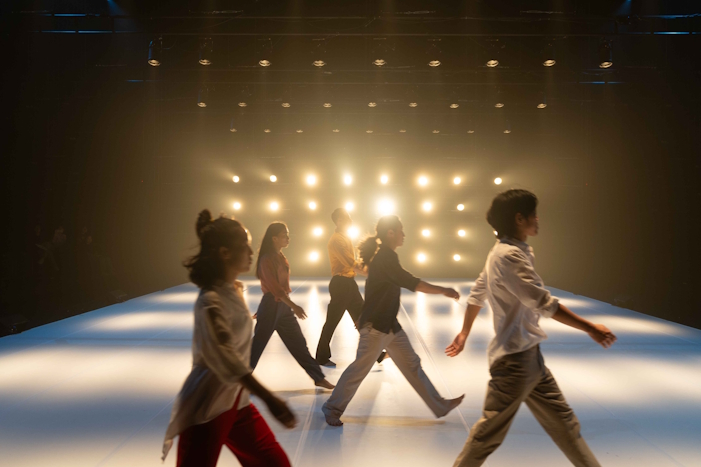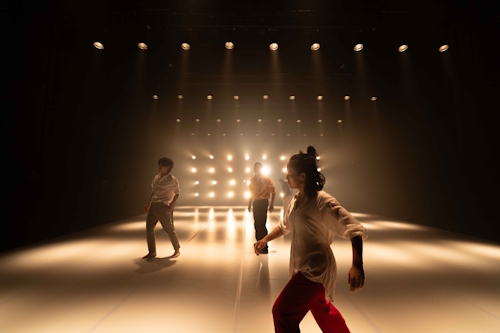Queen Elizabeth Hall, Southbank Centre, London
November 6, 2025
It opens quietly. Silence. Just Sung Im Her, who, with the house lights still up steals onto the stage almost unnoticed. On the floor, her body slithers and unfolds. When she rises, she jogs around the space, her running interrupted by hoppity-skippety steps. She appears to be trying to catch something.
When she departs, she’s replaced by seven other dancers dressed in everyday street clothes adorned with scraps of what looks like silver foil. They stand, they shudder, as if under some great weight and about to crack. They walk; expressionless. It’s not quite marching but it certainly has purpose. There’s not a single missed step. Occasionally one drops out for a brief individual solo before merging easily back into the ensemble. The togetherness is terrific, as indeed is their dancing throughout.
The whole work is a feast of mobile bodies, the inventive movement sometimes jagged and sharp, sometimes wonderfully fluid. Occasionally one collapses to the floor, like a puppet whose strings have been cut, but in lovely slow motion.
There is no narrative as such, but one does detect an increasing sense of urgency. The dancers’ perambulations increasingly complex, packed with sharp turns. As they divide and reassemble, the timing is split-second accurate.
At first sight, it appears quite abstract. However, the publicity (there is no programme, not even a free sheet) tells us that the work is an exploration of the realities of climate change, through sound, movement and light. It’s a good job it does because, while 1 Degree Celsius has many clues, not least its title, I’m far from convinced you would know otherwise.
Husk skippet and Lucy Duncan’s soundscape runs from meditative, sleepy rhythms, to heavy, pulsing sounds, the latter perhaps reflecting humankind’s ever-faster march towards climate catastrophe, or perhaps just the ever-increasing pace of human activity.
At times, Young Uk Lee’s lighting reflects the work’s title brilliantly, most notably in a scene that features an icy blue upstage light that puts the dancers in silhouette. It is sometimes very dark, though, reducing the performers to mere shapes in the gloom. At the other end of the scale, the rock concert-like bank of 32 lights shone straight at the audience is blinding.
No-one, well almost no-one, is going to challenge the importance of Sung Im Her’s subject. Her approach leaves a lot of space for personal interpretation. Perhaps a little too much, though. In the end, it’s the dancers rather than that the subject or any messages that are the stars of the show.


